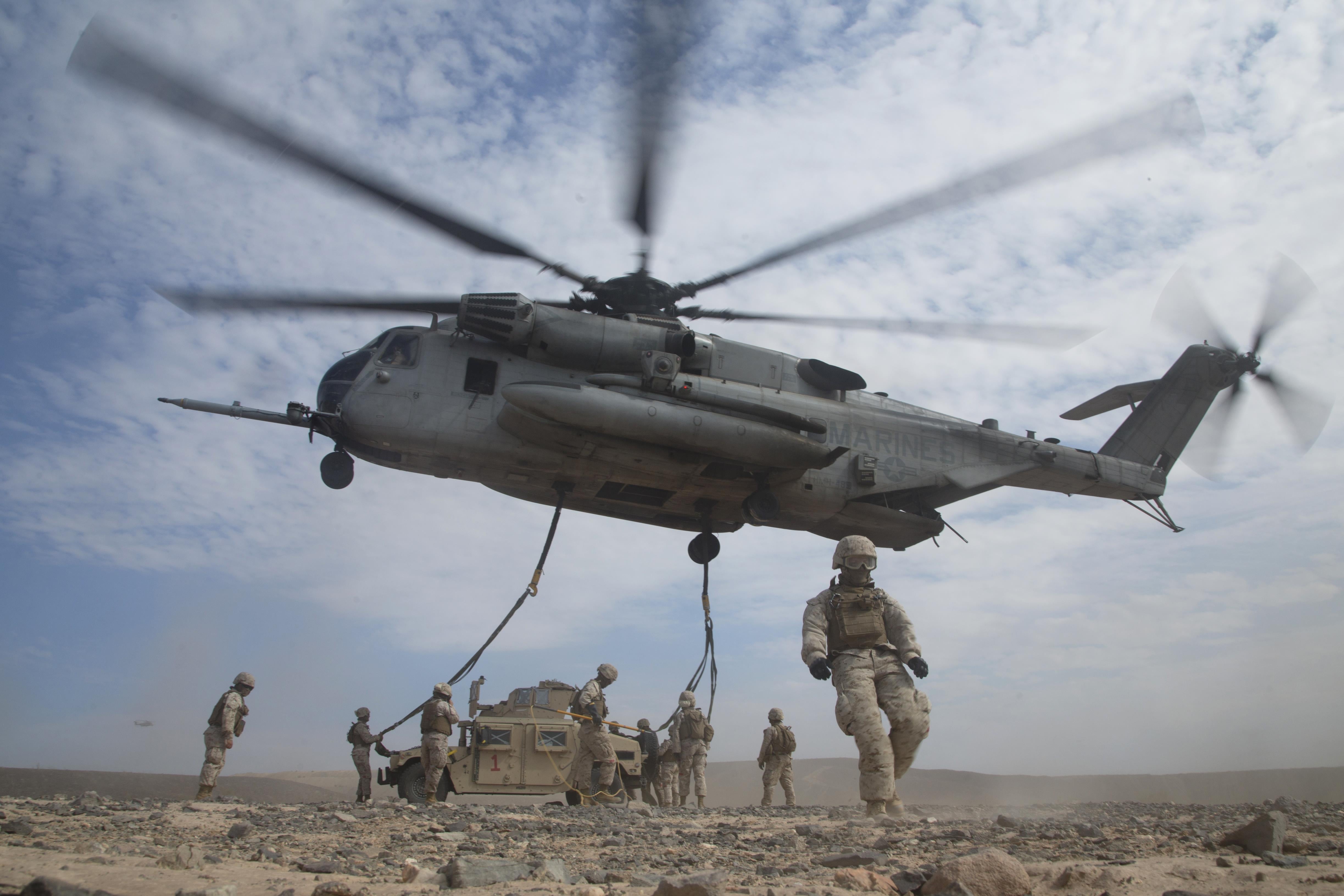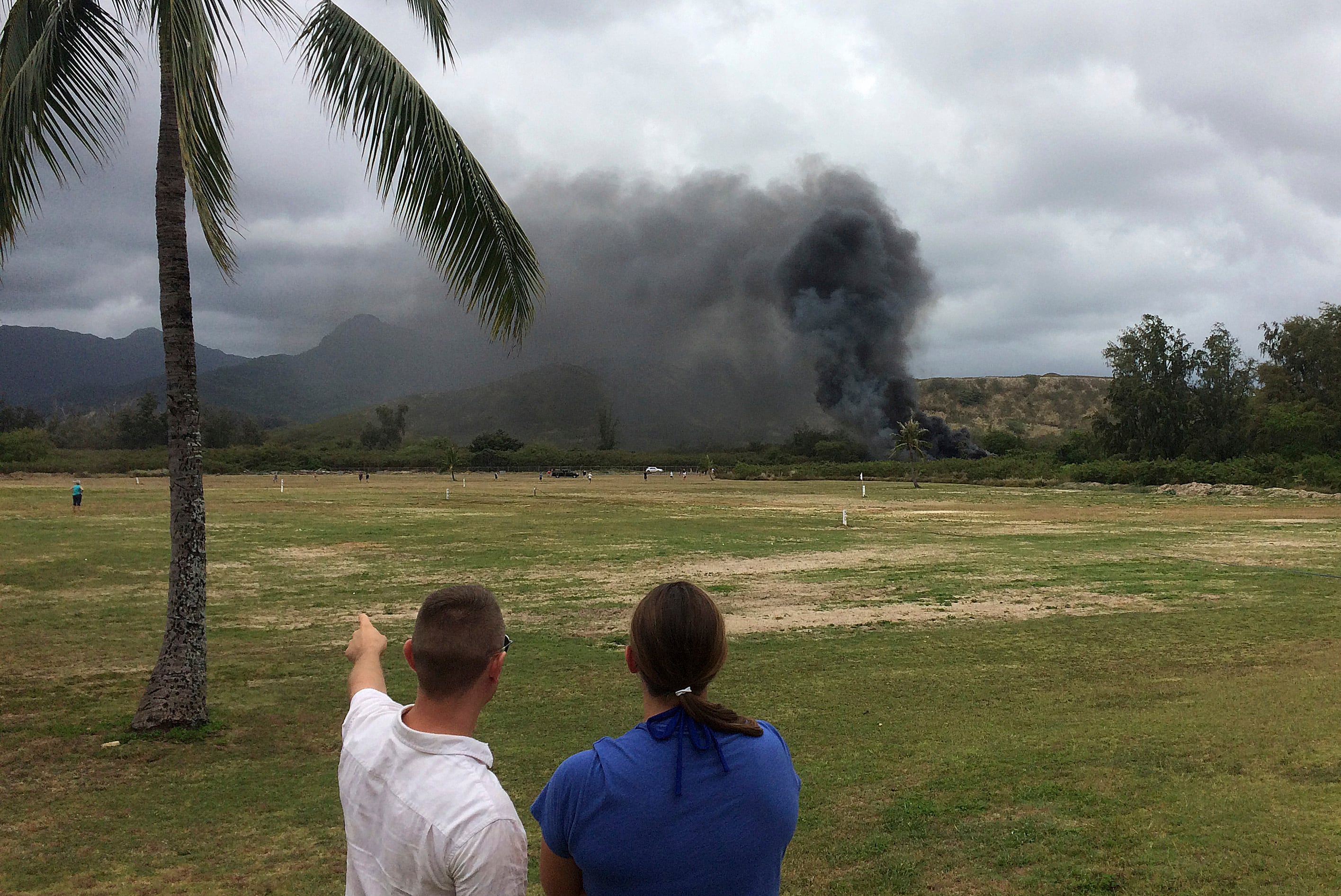Senators asked Marine Corps Commandant Gen. Robert Neller on Wednesday if the steep budget cuts Congress has foisted on the military have led to fatal helicopter crashes and put other Marines' lives at risk.
At the Senate Appropriations defense subcommittee hearing, Sen. Dick Durbin asked Neller what lawmakers could do to avert tragedies such as the Jan. 14 crash of two CH-53Es from Marine Heavy Helicopter Squadron 463 that killed 12 Marines.
Durbin, D-Ill., cited reporting from Marine Corps Times that Marine aviation deaths were at a five-year high even before the Jan. 14 crash, with 18 Marines killed in 13 incidents between May 2014 and September.
"The reason I want to bring this home is because this is a trend, which I know you are dedicated to stopping, in terms of the incidents that have occurred," Durbin said. "But I want to find out what we are doing. If our budget is not designed to prepare for readiness, to protect the lives of Marines, sailors and others, then we are falling far short of our responsibility."
Neller replied that Marine Corps aviation faces challenges across the fleet, but the service needs to "rebuild the readiness" of its CH-53E fleet in particular.
"I would say the CH-53 community is probably right now the most challenged because of a variety of reasons: available aircraft, certain maintenance issues that go back to a Navy MH-53 accident three years ago this past January," Neller said. "When you don't have enough airplanes to fly, then your flying hours go down and it becomes difficult to maintain your currency."

Marines prepare a Humvee for transport via sling load underneath a CH-53E Super Stallion helicopter during an assault support tactics exercise at Landing Zone Bull, Chocolate Mountain Aerial Gunnery Range, Calif., Oct. 12, 2015.
Photo Credit: Cpl. Summer Dowding
The CH-53E supply chain is stressed, making it hard for units that are not deployed to get all the parts they need, a veteran pilot told Marine Corps Times.
"You've got this whole priority matrix of how we support the squadron," said the pilot, who remains involved in the tight-knit community and asked his name not be used so he could speak freely. "The squadrons that are on UDPs [Unit Deployment Programs] or they're floating around with a MEU on ship are probably No. 2.
"All the way down to those squadrons that are in the rear, in this case at Kaneohe Bay sitting back and they're struggling for every part. Specifically in the case of HMH-463, you're talking now not only are they a lower priority, but they are literally at the end of the supply chain."
The Marine Corps plans to get more CH-53Es through depot maintenance and make spare parts more available so that it can increase the number of helicopters that are ready to fly, Neller said. That will allow the service to increase the number of flight hours for the aircraft.
"We have a plan and we believe we have sufficient funding to do that," he said. "It's just not going to happen overnight."
Getting new helicopters will also take time because the CH-53K's replacement is still in its testing stage, Neller said.
"There's two prototypes that have flown over 25 hours," Neller said. "But that airplane — assuming it all goes on track — we won't start to see that for several years."
Durbin said lawmakers must fix the harmful effects of deep budget cuts on readiness.
"I want to make sure that as we look at the next year's budget, that we are digging ourselves out of this hole," Durbin said. "It is a hole created by budget cuts by this Congress, which has — obviously — endangered the lives of men and women who are serving our nation. We don't want that to occur."

A man and woman look toward smoke rising from a Marine Corps Osprey aircraft on May 17 after making a hard landing on Bellows Air Force Station near Waimanalo, Hawaii. The fatal crash of the Marine Corps' new hybridized airplane-and-helicopter aircraft during a training exercise is renewing safety concerns about the machine.
Photo Credit: Zane Dulin via AP
It is a sentiment shared by Sen. Lindsey Graham, R-S.C., who pressed Neller on whether Congress had put Marines' lives at risk by cutting the budget as the op tempo has remained high.
During Wednesday's hearing, Graham read from Neller's comments at a hearing the previous day, in which Neller said aviation readiness is his primary concern because the Marine Corps does not have enough aircraft ready to fly or flight hours.
"Don't you think that is putting people at risk?" Graham asked.
"If those forces had to deploy, they would be at risk, yes," Neller said.
Gidget Fuentes contributed to this story.
Jeff Schogol covers Marine Corps leadership, gender integration, aviation, and Pacific-based Marines for Marine Corps Times. He can be reached at jschogol@marinecorpstimes.com





